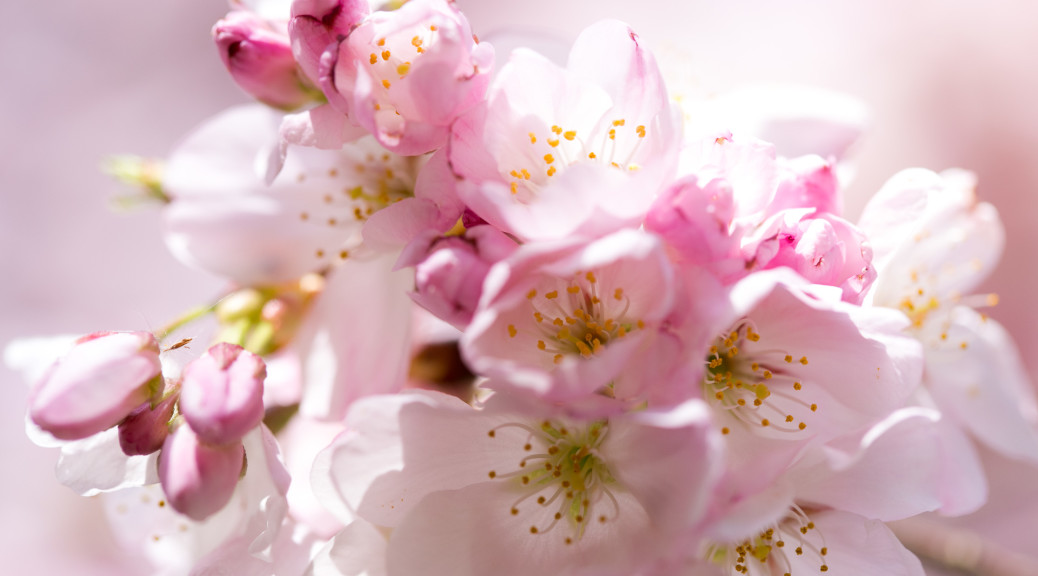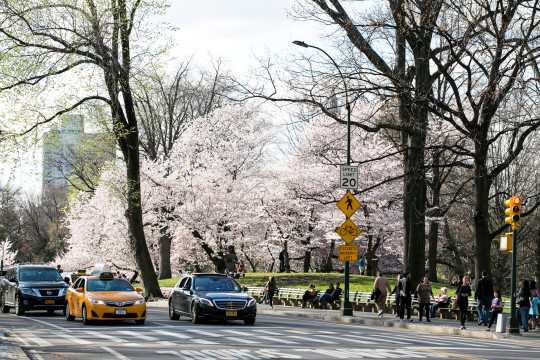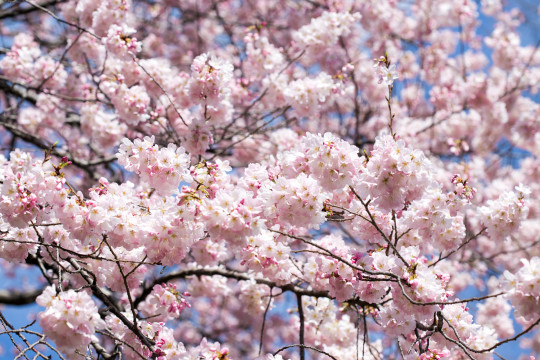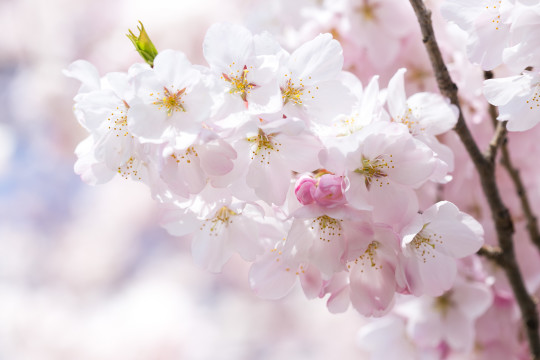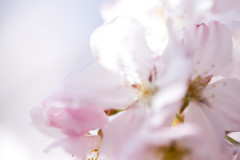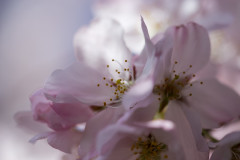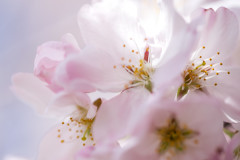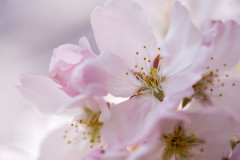The rough-hewn urban surfaces of New York City don’t appeal to my eye or my camera. However, when natural phenomena happen — the changing of autumn, dramatic snowstorms, spring’s fist bloom — that’s when my camera has its fun.
(As always, click the photos to view in theater mode.)
Every spring, there’s a brief week-long window when the branches grow flowers before the leaves. The colors are pure and striking: bright whites and sweet pinks without the deep greens. Central Park is an oasis of nature in Manhattan, and yesterday, at 72nd and 5th, a grove of five trees were blooming spectacularly.
Let’s get closer, shall we?
Closer still!
Ah, that’s better.
Back in Santa Barbara, I bought my macro lens mostly just to take close-up photos of flowers (see macro page). Aside from at the chrysanthemum exhibit, it has been woefully underused in New York, but these trees provided a rare opportunity.
Macro is a blast to shoot and accessible at all times (all it takes is a few centimeters of beauty!), but it’s also intensely technical. My lens has 1:1 capability, so my 36x24mm sensor can capture objects that are 36x24mm. For reference: a US quarter is 24.25 mm in diameter, too big to fit. On that scale, margin of error is measured in fractions of millimeters. On that scale, you can watch petals flutter in the wind. For only for a moment though… before the gust sways the branch completely out of frame. It’s comically frustrating.
When appreciating macro shots, you can deduce the size of the subject by noticing how much is in focus. The “plane of focus” is determined by ratios of distances, and it’s very, very narrow in macro. On the horizon, 100 meters and 100.01 meters are functionally equivalent, but when close-up, 10 centimeters and 11 centimeters differ significantly. One’s going to be in focus, the other is not. Taken to the extreme, macro shots of the tiniest objects have only minuscule details in focus.
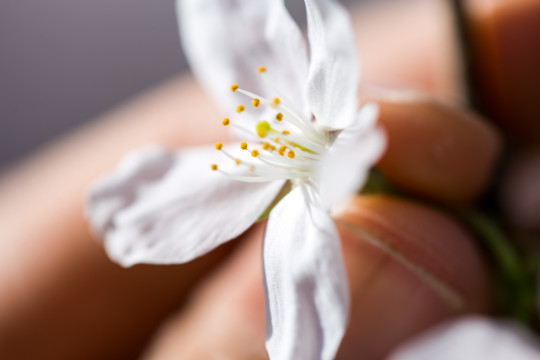
That’s why when people want normal-sized things to appear “miniature” all they do is artificially blur the top (usually further) and bottom (usually closer) of the photo.
Macro demands precision. Yes, fractions of millimeters. Lateral sway is obvious too, but the key degree of freedom is forward and backward. You can crop photos to fix lateral sway, but the plane in focus is narrow is 100% unchangeable.
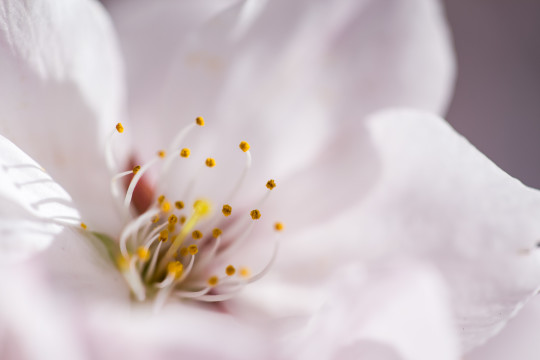
My strategy to combat this: I’ll start slightly too far away and bring my camera forward slowly while snapping pictures as fast as I can. Spray and pray, as they say.
Macro demands thoughtful positioning. Much of the battle is deciding beforehand what you want to be in focus. Positioning your camera, angling your approach to slice the plane of focus and how clarity fades into the distance will dictate the entire look and feel of the photo. Positioning also changes the objects that are visible blurry in the background. For example, it can be a looming dark tree or whimsical blue sky.
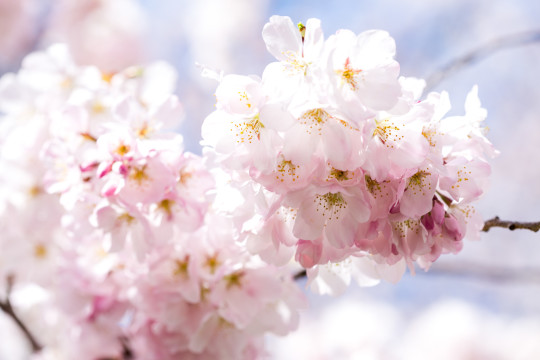
Macro demands significant light. For cheap no-flash people like me, that means direct sunlight. Yesterday, when I saw a temporary break in the clouds, I grabbed my camera and rushed to Central Park as quickly as I could. When there, I took photos only of the leading-edge of branches that were directly illuminated. Of those, I avoided the flowers hanging underneath because they were overshadowed by themselves.
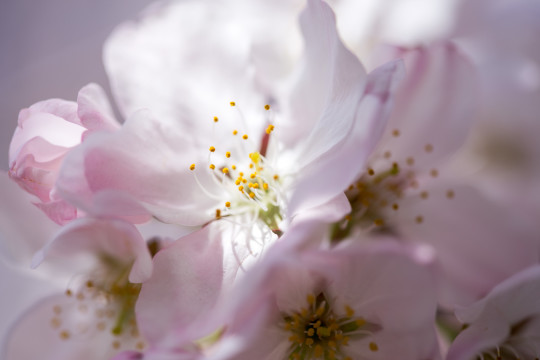
There are technical details about why macro is so light-demanding (effective F-stop is determined by focal length to aperture ratio, which is exaggerated at close focus distances), but also things just look better when flooded with natural light. Take my word for it!
Macro demands patience. For obvious reasons. Here are 6 of 18 failures while trying to get the shot above.
Just roll with it. Digital photography enables you to shoot lots now, delete later.
Oh, by the way, I mention these tips because cell phone cameras do macro photography unusually well. The tiny cameras can take photos from like 2 cm away from your subject, which means you can get nice and close to bring out the detail. Give it a shot!
